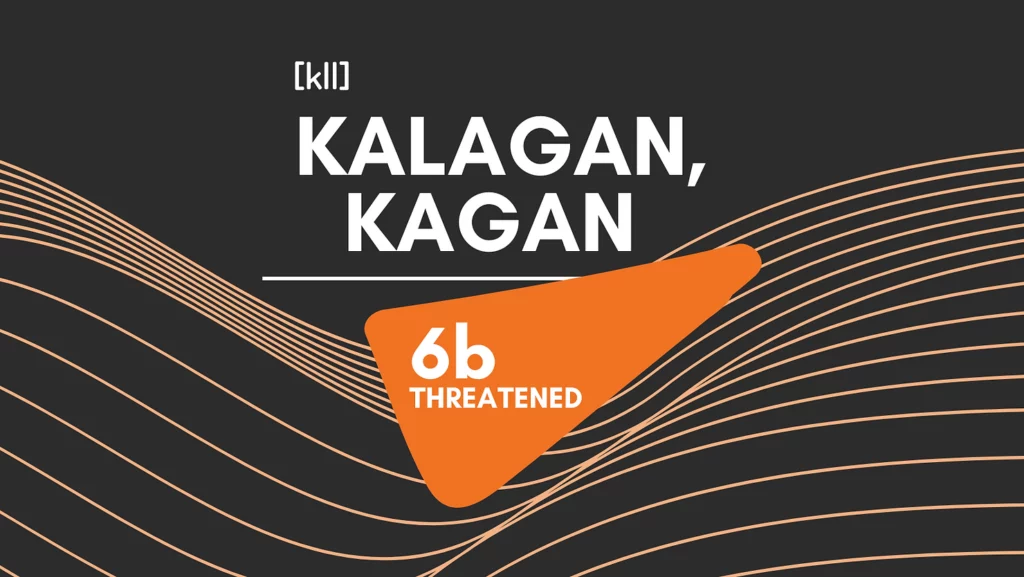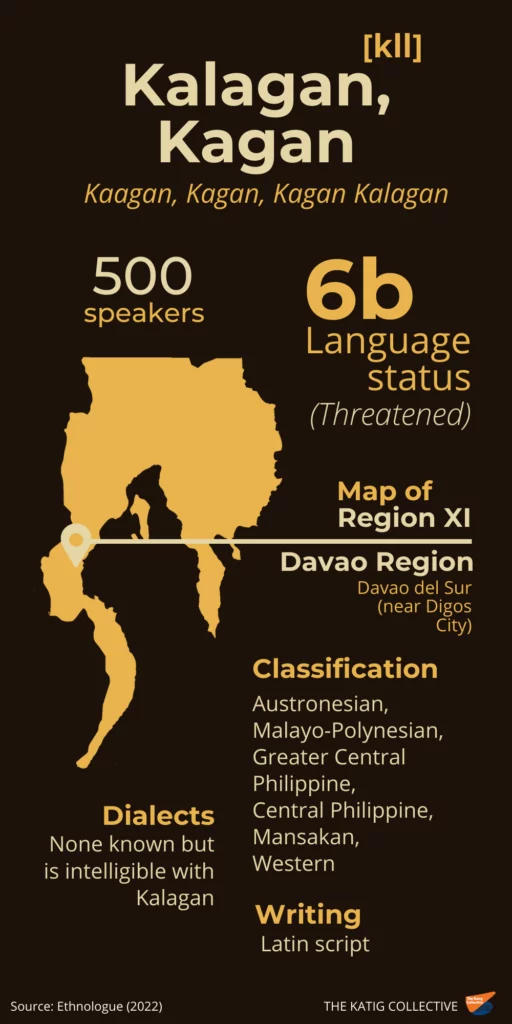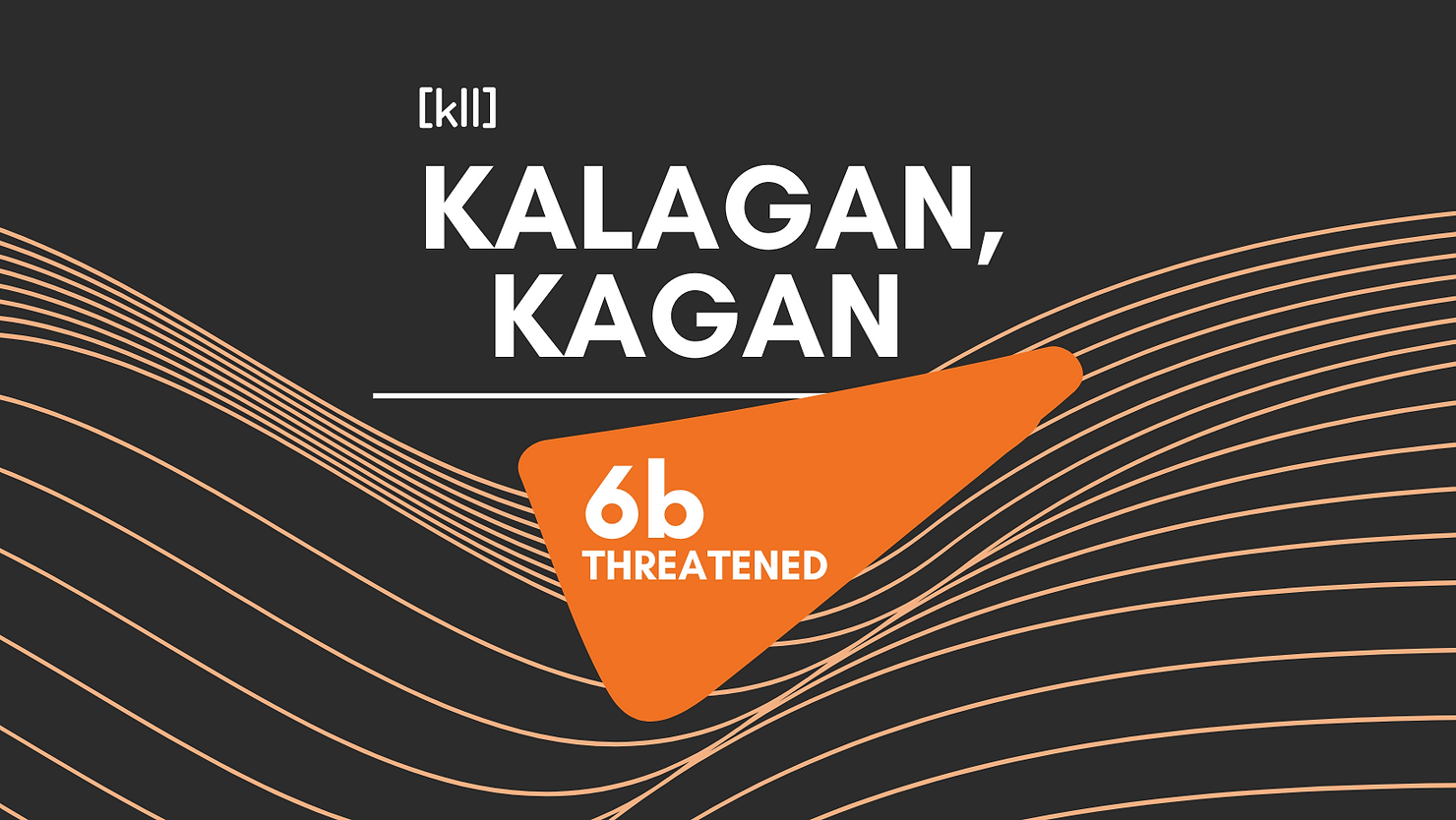Kalagan, Kagan
Kalagan, Kagan [kll] is a Western Mansakan language used near Digos City in Davao del Sur (Eberhard et al., 2022). It is considered threatened (EGIDS 6b*) and the United Nations Statistics Division (UNSD) reported that the language has only 500 users in 2005. Kalagan, Kagan shares 82% intelligibility with Kalagan [kqe] (Eberhard et al., 2022) and 66% intelligibility with Cebuano [ceb] based on the 1973-1974 Murray-Regier survey (as cited in Wendel & Wendel, 2003).

The Kagan population then and now
The Kagans once occupied an area between the Bilaans who were residing in the mountains and the Sarangani Manobos and Muslims on the coast. They moved to Padada in 1860 after defeating the Bagobos, but were relocated to a reduction area near Digos by 1886. The Kagans also briefly dominated the Digos-Padada district before being subjected to some pressure that prompted the population to disperse (Cole, 1913, as cited in Wendel & Wendel, 2003). The first immigrants began arriving in 1918 when the government encouraged people from Luzon and Visayas to settle in the southern part of the country; further in-migration happened during World War II. In more recent years, Kagans interact with Cebuanos, especially in schools. The small population size prompts the youth to seek prospective partners from other communities. Men also often look for opportunities outside the Kagan territory (Wendel & Wendel, 2003).

Works about Kalagan, Kagan
Several works about this language are co-authored by Asa and Dag Wendel, and these include studies on the language’s phonemic system (1978), noun phrases (1979), and verb classification (1979), as well as a status and sociolinguistic report (2003). Dag Wendel also compiled a Hagonoy wordlist (1979), and co-authored a paper about topic and focus with Hale (1979).
References
Cole, F. C. (1913). The wild tribes of Davao district, Mindanao. Publications of the Field
Museum of Natural History Anthropological Series, 12(2), I-VII, 49-203.
http://www.jstor.org/stable/29782138
Eberhard, D. M., Simons, G. F., & Fennig, C. D. (2022). Kalagan, Kagan. Ethnologue: Languages of the world (25th ed.). https://www.ethnologue.com/language/kll
Hale, A., & Wendel, D. (1979). Eligibility for topic and focus in Kaagan-Kalagan. SIL
International. https://www.sil.org/resources/archives/25568
Hammarström, H., Forkel, R., Haspelmath, M., & Bank, S. (Eds.). (2022). Spoken L1 language: Kagan Kalagan. Glottolog 4.6. https://glottolog.org/resource/languoid/id/kaga1255
Open Language Archives Community. (n.d.). OLAC resources in and about the Kagan Kalagan
language. http://www.language-archives.org/language/kll
Wendel, A., & Wendel, D. (1978). Kaagan-Kalagan phonemic statement. SIL International.
Wendel, A., & Wendel, D. (1979). Kaagan-Kalagan noun phrases. SIL International.
Wendel, A., & Wendel, D. (1979). Kaagan-Kalagan verb classification. SIL International. https://www.sil.org/resources/archives/89838
Wendel, A., & Wendel, D. (2003). Report on Kagan-Kalagan. SIL International.
Wendel, D. (Comp.). (1979). Kaagan Kalaganan (of Hagonoy) wordlist. SIL International. https://www.sil.org/resources/archives/77146

